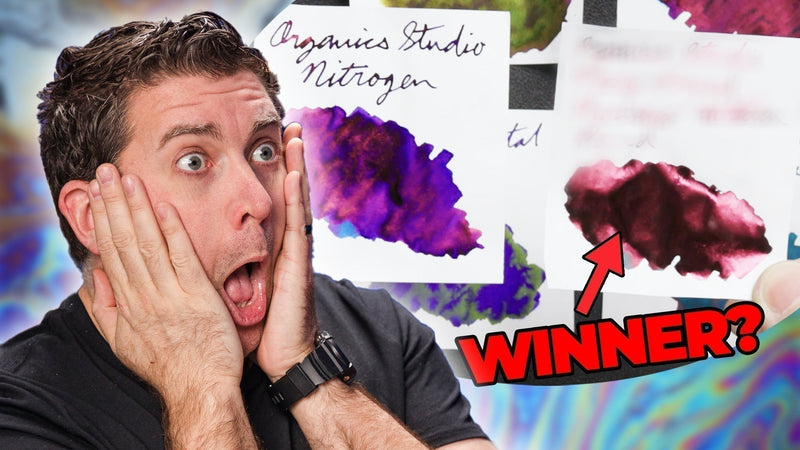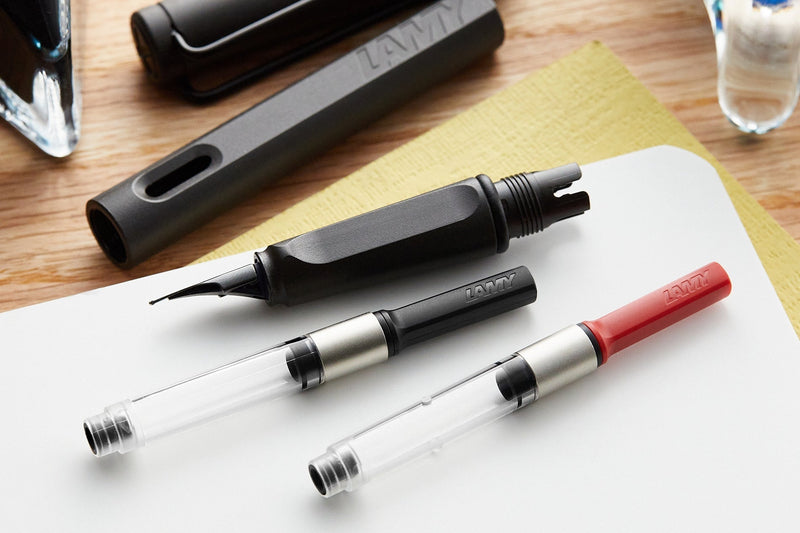Visconti Van Gogh Fountain Pen - Flowering Plum Orchard
"Flowering Plum Orchard" is the second oil painting selected by Visconti from Van Gogh's Japanese series. The artist made this painting in 1887 from a Japanese print by Hiroshige, called Plum Garden in Kameido. Visconti's latest launch draws inspiration from this most treasured and iconic paintings.
The collection has yellow gold plated metal fittings which add light to the red, green, and brown acrylic resin. The fountain pen comes with a new red ink called "Flowering Plum Orchard" and is available in fine and medium widths. A converter is included with each fountain pen. It is also accompanied by a bookmark showing a detail of the painting.
The ancient plum tree that was the subject of the original print had the poetic nickname of "the sleeping dragon plum tree". Van Gogh accurately reproduced the composition with more intense colors replacing the black and grey of Hiroshige's tree trunk with red and blue tones. He also added the two orange borders with Japanese characters for a decorative and exotic effect.
Note: We do our best to photograph the pens to show how they will appear in person, but due to the nature of the material there will be some variation in the pattern seen here. This adds an element of uniqueness to the pen, with no two patterns being exactly the same.
Click here to shop all compatible short standard international ink cartridges.
- Condition
- New
- Brand
- Visconti
- Type
- Fountain Pens
- Color
- Red
- Demonstrator
Whether or not the barrel of the pen is translucent, allowing you to see the ink and filling mechanism inside.
- No
- Body Material
- Resin
- Cap Type
How the cap is opened/closed from the barrel of the pen. Some common options include Snap-Cap, Screw-Cap, Magnetic Cap, or Capless (no cap).
- Magnetic cap
- Compatible inks & refills
Which ink this pen will accept. Choices include bottled ink and various styles of pre-filled ink cartridges.
- Bottled ink, Standard international short ink cartridges
- Filling Mechanism
How the pen fills with ink. Click here to watch our video tutorial on common filling mechanisms.
- Cartridge, Converter
- Grip Material
- Metal
- Nib Size
- Fine
- Nib Color
- Gold
- Nib Material
- Steel
- Postable
Whether or not the cap fits securely onto the back of the barrel when open.
- Yes
- Retractable
Whether or not the nib/tip can retract into the body of the pen (usually for click or twist-open style pens).
- No
- Trim
- Gold
- Diameter - Body
- 12.4mm (0.49in)
- Diameter - Cap (without clip)
- 14.5mm (0.57in)
- Diameter - Cap (with clip)
- 19mm (0.75in)
- Diameter - Grip (mm)
Measured from the place most people choose to rest their fingers, which varies with each pen.
- 10.3mm
- Length - Body
The measurement from the back end of the barrel to the tip of the nib.
- 124.1mm (4.89in)
- Length - Cap
- 65.7mm (2.59in)
- Length - Nib
The measured length of the visible portion of the nib when it is installed in the pen, from grip to tip.
- 20mm (0.79in)
- Length - Overall (Closed)
- 139.5mm (5.49in)
- Length - Overall (Posted)
When the cap of the pen is posted onto the back of the pen body, this is the measurement of the entire pen including the nib.
- 158.3mm (6.23in)
- Weight - Body
If a converter is included with the pen, this weight is reflected in the total.
- 20g (0.71oz)
- Weight - Cap
- 11g (0.39oz)
- Weight - Overall (g)
- 31.0g
- Max Ink Capacity - Cartridge
The maximum volume of ink that can fit in the pen when using a cartridge.
- 0.94ml
- Max Ink Capacity - Converter
The maximum volume of ink that can fit in the pen when using a converter.
- 1.03ml





























